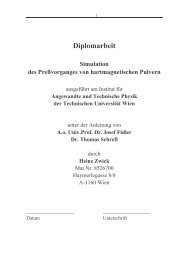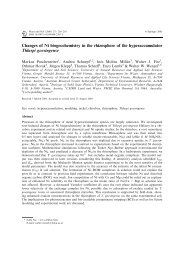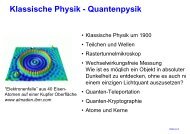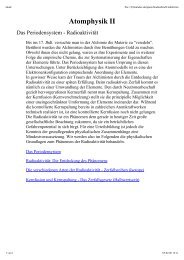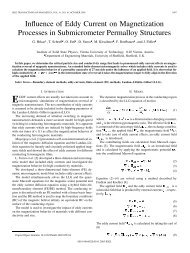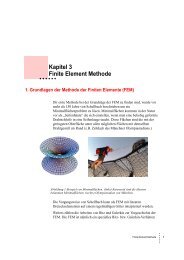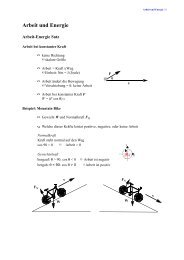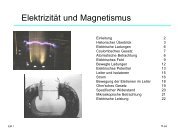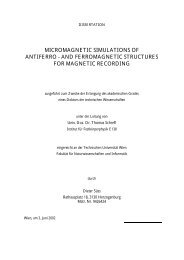Read Back Signals in Magnetic Recording - Research Group Fidler
Read Back Signals in Magnetic Recording - Research Group Fidler
Read Back Signals in Magnetic Recording - Research Group Fidler
Create successful ePaper yourself
Turn your PDF publications into a flip-book with our unique Google optimized e-Paper software.
Appendix A<br />
In case we have the function as given <strong>in</strong> (A.2), we have to divide the volume V <strong>in</strong>to a small<br />
sphere with radius ε around the s<strong>in</strong>gularity r ′ denoted with Kε ( r ′ ) and the rest of V. Then<br />
the theorem (A.1) can be written as<br />
∫ grad f dV + ∫ grad f dV = �∫ f dA− �∫ f dA+ � ∫ f dA.<br />
(A.7)<br />
V / Kε( r′ ) Kε( r′ ) ∂V ∂Kε( r′ ) ∂Kε(<br />
r′<br />
)<br />
For the volume V / Kε ( r ′ ) with the outer surface ∂ V and the <strong>in</strong>ner surface ∂Kε ( r ) the<br />
theorem holds, because the s<strong>in</strong>gularity is excluded. To prove the theorem, we only have to<br />
show, that<br />
∫ ∫<br />
grad f dV = � f dA<br />
. (A.8)<br />
Kε( r′ ) ∂Kε(<br />
r′<br />
)<br />
The equality is valid, if both sides vanish for ε → 0 . Without loss of generality, it is sufficient<br />
to show the equality for the first vector component. Then the <strong>in</strong>tegrand of the left hand side is<br />
( f ) = 3<br />
grad x<br />
x − x′<br />
, (A.9)<br />
r−r′ which is asymmetric around r ′ . Therefore the left hand side <strong>in</strong> (A.8) vanishes. For the right<br />
hand side we have<br />
1<br />
⎛ ⎞<br />
4πε<br />
= ∫ dA = f dA ≥ ⎜ f d ⎟<br />
Kε( ′ − ′ ∫ ⎜ ∫ A<br />
r r<br />
⎟<br />
∂ r ) ∂Kε( r′ ) ⎝∂Kε( r′<br />
) ⎠<br />
� � � . (A.10)<br />
So this side also vanishes, if ε→ 0 , q.e.d.<br />
x<br />
79



